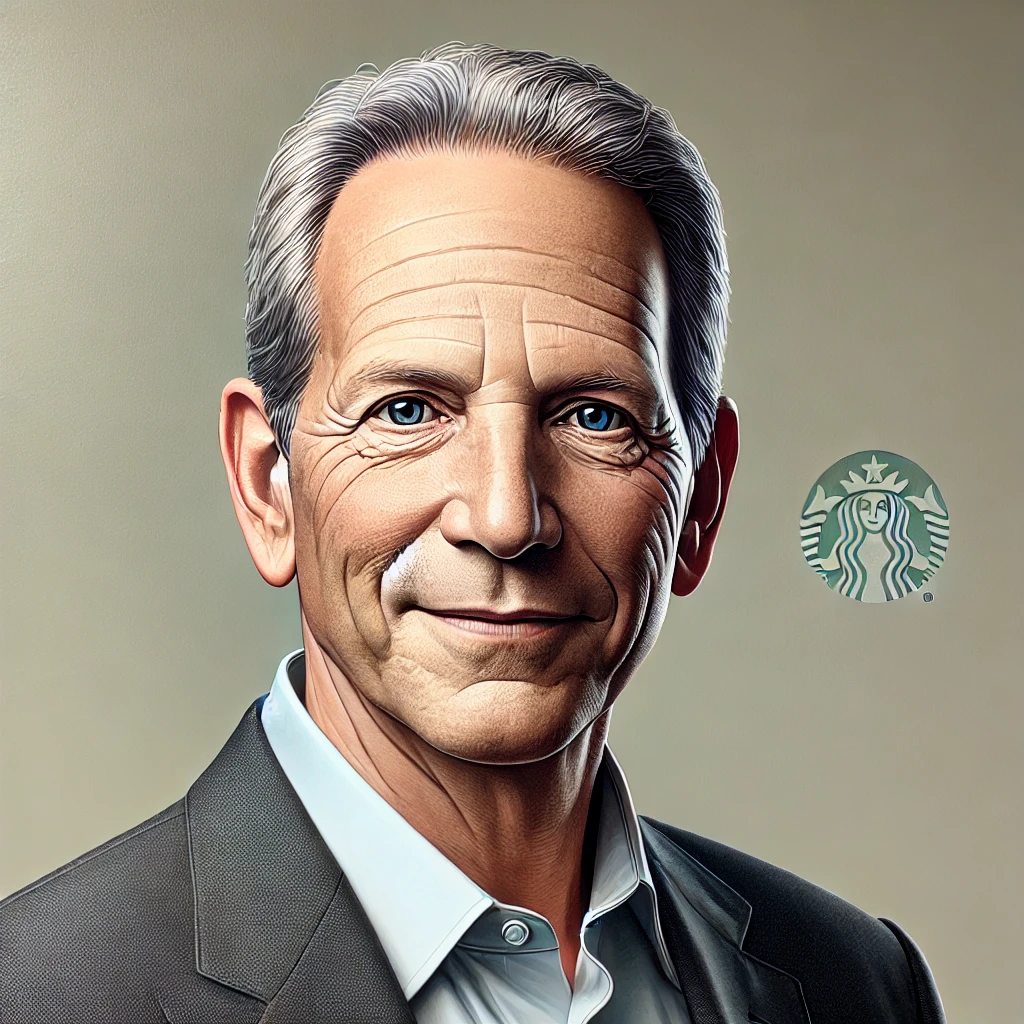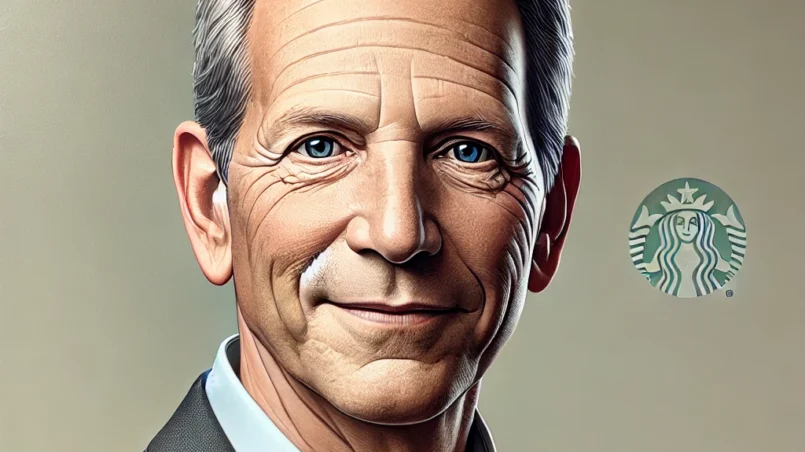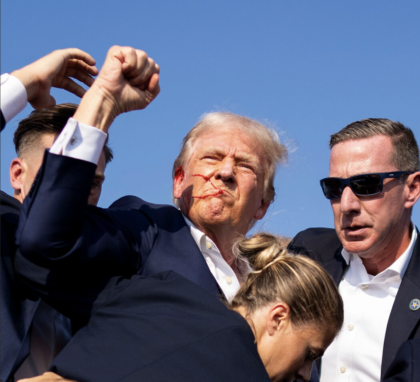Starbucks is so ubiquitous that it’s hard to imagine a world where it doesn’t exist.
I used to count the amount of Starbucks I saw riding the bus from my home in La Jolla to Point Loma (San Diego) on my way to school to pass the time. Certain corners would have competing stores across the street. Even when I was young, I always thought that was frivolously funny; now, I think it’s more of a testament to their success.
If you travel around any major city in the United States, chances are you’re going to see one, see someone walking around with the iconic cup, or walk into a grocery store selling their products. Most famous and popular coffee shop in the United States and globally, hands down.
Howard Shultz, the Former Chairman and CEO, recently sat down with the Acquired Podcast to explain in painstaking detail how he took the business from selling Peet’s Coffee beans in the Seattle area to the global behemoth it is today.
If you haven’t heard of the Acquired Podcast, it’s a podcast that covers different businesses, such as Starbucks, in an MBA level of detail so that the listener can learn why the business has become so successful.
Listening is like going to business school without having to enter the classroom. Their podcasts are generally pretty long, and this one is no different, clocking in at over three hours. But even as someone who doesn’t drink coffee, I found it fascinating.
Below are some of the important business lessons you can learn from Howard Shultz and his experience growing Starbucks.
THE LEGACY OF HOWARD SCHULTZ

Shultz’s story really should be a movie. Similar to Roy Kroc (McDonald’s), Shultz did not invent Starbucks. However, he is the man who took them from a minor retail player to changing the culture and appetite for coffee in the United States and globally.
It’s important to recognize Shultz’s humble beginnings. Growing up in Brooklyn’s projects, constantly worried about money, he knew he was destined for something great. He had a difficult job in sales selling for Xerox but had the grit and determination to make it big at that company or another.
Betting on himself, Shultz moved to Seattle with his wife to become head of marketing for Starbucks.
At the time, the coffee shops we have become so accustomed to seeing didn’t exist in the US, and there wasn’t a culture of coffee here like there was in Italy, for example.
While it’s impossible to cover every extraordinary thing that Shultz achieved, he had no shortage of help along the way, including that from Bill Gates Sr.
Bill Gates Sr. helped Shultz secure the business when the original founders were selling it. Others in the Seattle area were swirling, but it was clear that Shultz had so much invested in Starbucks’s success that it wouldn’t be fair to sell to another person with no interest in the business. Of course, in the end, Shultz was able to secure a successful buyout, but without the help, it’s possible we would not have Starbucks as we know it today.
VISION AND INNOVATION
Schultz’s vision for Starbucks was to sell coffee and create a “third place” between home and work where people could relax, socialize, and enjoy a premium coffee experience. This innovative concept revolutionized the coffee industry and set Starbucks apart from its competitors.
How many times have you had a meeting at Starbucks?
There’s a reason for it.
In the podcast, Schultz talks about how a trip to Milan inspired him. He saw how Italian coffee culture centered around community and quality and wanted to bring that experience to America. This vision drove Starbucks’ transformation from a retailer to a full-fledged coffeehouse chain.
One example of Starbucks’ innovation is the Frappuccino, which quickly became a customer favorite and a staple on the menu. It was invented inside a Starbucks retail store in response to what the customer wanted. Funnily enough, Shultz didn’t like it or the idea of it, but he went along because it was what the customer wanted and gravitated towards; in the service industry, it is critical to listen to and absorb your customers’ feedback.
Here is a video of a modern barista creating a unique Starbucks drink for a customer.
Think about the modern sense of personalization and customization of drinks that we have now. This is part of what makes and continues to make Starbucks so great. You can order what you want exactly how you want it, and they will accommodate you. It’s incredibly American and customer-focused to the core.
Complete opposite of Bon Qui Qui at King Burger, who, in a hilarious Mad TV sketch, called security on customers who had complicated orders.
I believe Starbucks contributed to or was part of the shift in culture, especially in America but also globally, toward extreme individualism. We can ask for exactly what we want and expect it to be made to our specifications, even if what we want isn’t readily available. That entitlement to accommodation spreads beyond the barista table. It is a luxury that we have grown accustomed to. If you went to a restaurant and they didn’t offer to make the food to your exact liking, you may leave and be frustrated by the experience because you are so used to being accommodated.
LEADERSHIP AND CULTURE

A standout aspect of Schultz’s leadership is his focus on company culture. He believed in creating an environment where employees, referred to as “partners,” feel valued and motivated. This emphasis on culture has been a cornerstone of Starbucks’ success, fostering loyalty and driving the company’s growth.
The podcast highlights Schultz’s philosophy of treating employees with respect and providing them with benefits uncommon in the retail industry, like healthcare and stock options. This approach built a committed workforce and contributed to Starbucks’ reputation as a socially responsible employer.
SOCIAL RESPONSIBILITY
Schultz has always championed social responsibility. Under his leadership, Starbucks implemented numerous initiatives focused on sustainability, ethical sourcing, and community engagement. The podcast highlights how these initiatives are not just corporate responsibilities but integral to the brand’s identity and success.
For example, Schultz discusses the Coffee and Farmer Equity (C.A.F.E.) Practices program, which ensures ethical sourcing of coffee and supports farmers with fair wages and sustainable farming methods. Starbucks’ efforts to reduce its environmental footprint through initiatives like eliminating plastic straws and promoting reusable cups are part of Schultz’s broader vision for the company.
This environmental responsibility also helped him develop today’s iconic Starbucks cup. He wanted to eliminate the more dangerous styrofoam cup in favor of a paper one, which is better for the environment and the customer’s health.
NAVIGATING CHALLENGES

The podcast also explores the numerous challenges Schultz faced, including economic downturns, competition, and internal company struggles. His resilience and strategic thinking in navigating these challenges provide entrepreneurs and business leaders valuable lessons.
One significant challenge was the 2008 financial crisis, which hit Starbucks hard. Schultz made the tough decision to close underperforming stores and refocus on the company’s core values. This period of introspection and realignment ultimately led to a stronger, more resilient Starbucks.
PERSONAL REFLECTIONS
Listening to Howard Schultz share his journey and insights reminded me of the importance of vision and values in building a successful business. His story is not just about coffee; it’s about creating a brand that resonates with people on a deeper level and shifting culture as we know it. As someone who values innovation and social responsibility, I found Schultz’s approach both inspiring and instructive.
FINAL THOUGHTS
The Howard Schultz podcast on Starbucks is great for anyone interested in entrepreneurship, business strategy, and brand building. It’s a powerful reminder of how vision, leadership, and a commitment to values can transform a small business into a global powerhouse.
Whether you’re an aspiring entrepreneur, a seasoned business professional, or simply a fan of Starbucks, this podcast offers valuable lessons and inspiration. So, grab your favorite Starbucks drink (mine is tea), settle in, and get ready to be inspired by one of the most remarkable business stories of our time.
All the best,
Ariel
AUTHOR’S NOTE
I wrote part of this article by myself and the other with the help of a personally customized ChatGPT bot. I did this because I’m training myself on how to use artificial intelligence tools to make my content creation development faster.
AI will take over much of the brunt work of modern blog writing in the future, but you have to throw in the Bon Qui Quis of the world to show that it’s still being written, at least in part, by a human.
If you want to learn more about business and innovation, check out my article on NFTs.
All the best,
Ariel


